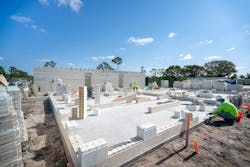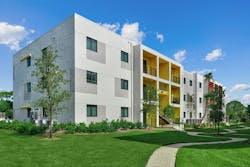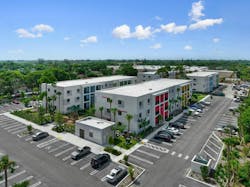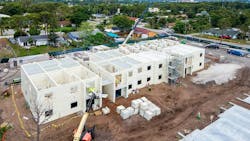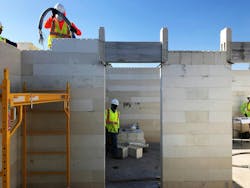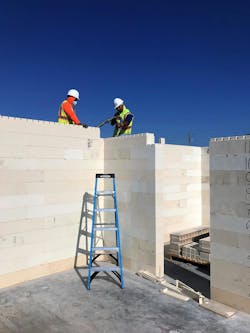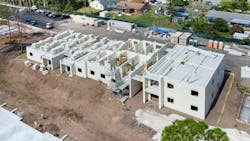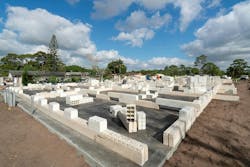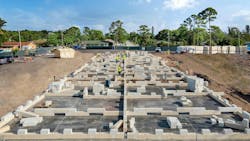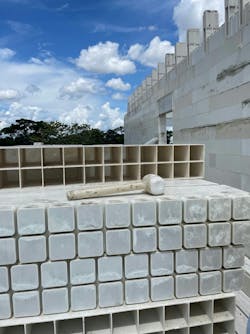Construction method featuring LEGO-like bricks wins global innovation award
By Peter Fabris, Contributing Editor
A new construction method featuring LEGO-like bricks made from a renewable composite material took first place for building innovations at the 2024 JEC Composites Innovation Awards in Paris, France.
RENCO USA's RENCO MCFR (mineral composite fiber reinforced) building system is composed of interlocking molded blocks similar to LEGO bricks. According to the maker, the system surpasses concrete in strength, reduces costs significantly, and allows for rapid construction. Made with recycled glass fibers, resin, and stone, the composite material is certified to withstand Category 5 hurricanes.
Following more than 12 years of research and development, RENCO completed its inaugural apartment complex in Palm Springs, Fla., last November. No specialized workers or heavy machinery are required to build with the blocks that are stronger but 75% lighter than concrete.
In Palm Springs, 11 unskilled workers, following color-coded plans, assembled each three-story building in about eight weeks.
More on the RENCO building system (from RENCO USA's website):
RENCO MCFR is a state-of-the-art structural building system of interlocking composite building units of various types and sizes of blocks, columns, beams, joists, headers, decking, connectors, etc. These products are all adhesively joined (chemically bonded) to form monolithic structures.
The RENCO Structural Building System has been evaluated in ANSI certified laboratories to ASTM standards for structural performance, physical characteristics, and fire resistance. After thorough evaluation, IAPMO-UES approved and issued its Evaluation Report to permit the use of RENCO Structural Building System under the IBC (International Building Code).
The RENCO Structural Building System currently can include up to five (5) story structures. Through continued research and development, expanded approvals are in process, with full approval to build up to eight (8) stories expected by the end of 2024. As 95% of all Americans live in 8 stories or less, we believe this next level of approval will open an incredible amount of opportunity for use of this revolutionary product.
